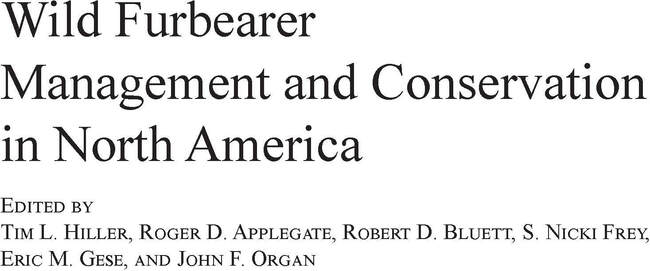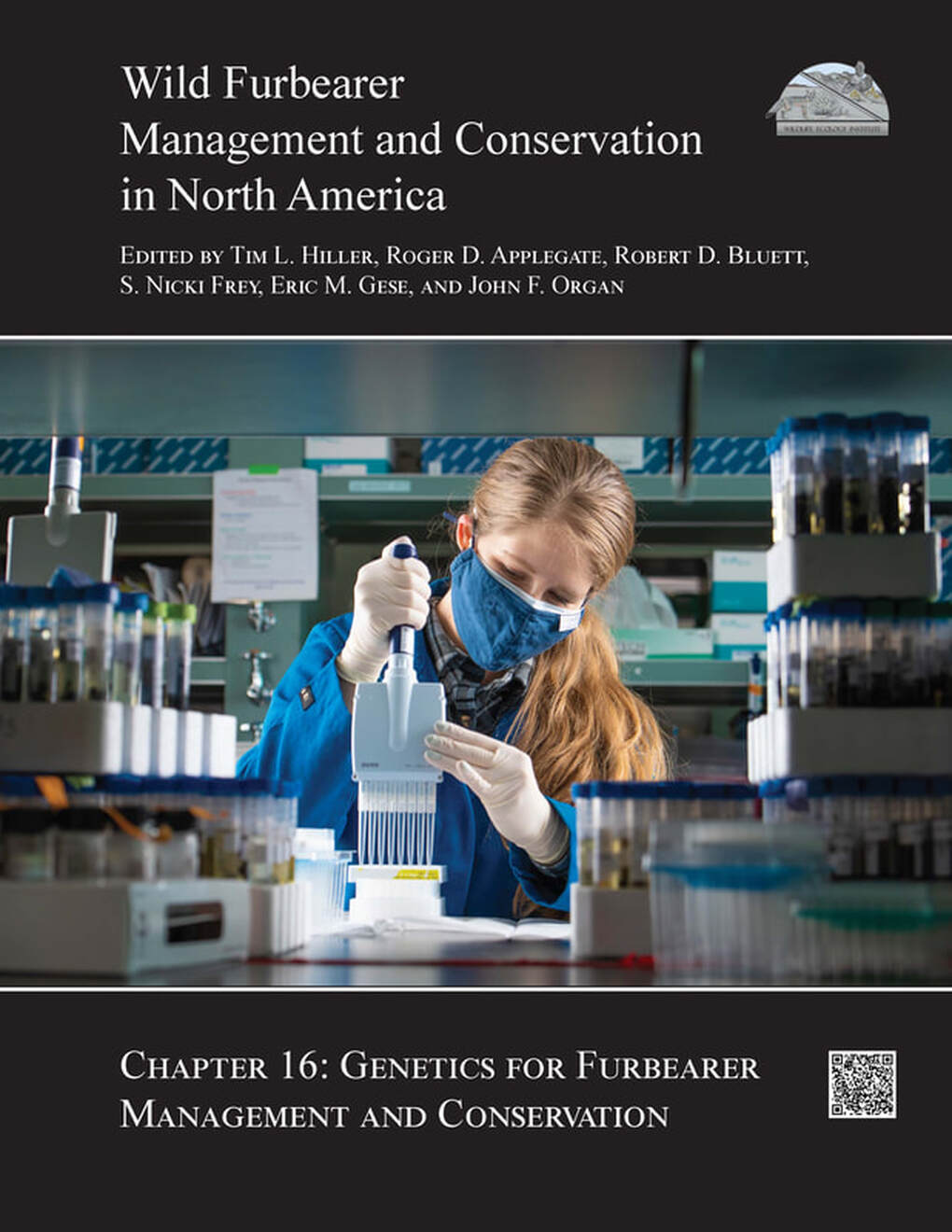For information about this book, including the Table of Contents, click here.
Published 22 November 2023
© 2023 Wildlife Ecology Institute
https://doi.org/10.59438/BZWM9451
© 2023 Wildlife Ecology Institute
https://doi.org/10.59438/BZWM9451
INTRODUCTION
A chapter on genetics was absent from Wild Furbearer Management and Conservation in North America (Novak et al. 1987) because, at the time, biologists were only beginning to recognize the importance of genetic factors in maintaining wildlife populations and the potential for genetic tools to provide insight into the ecology and evolution of these species. Since then, the relatively nascent field of conservation genetics, and its expansion to conservation genomics, has developed into an integral component of furbearer management and conservation. The field is quickly evolving, and the past decade has included particularly rapid advances in genetic understanding, techniques, and tools that open exciting new avenues for research and application, but also incite bewilderment at the dizzying array of changing and emerging approaches. In this chapter, we provide some foundational information on deoxyribonucleic acid (DNA) and its use in furbearer management and conservation to help biologists. Specifically, this includes: 1) gaining familiarity with key terms and concepts needed to effectively communicate and collaborate with geneticists, 2) increasing awareness of the types of questions DNA can help address and some specific empirical examples, and 3) providing resources to help make informed decisions when designing or conducting research where genetic samples may be appropriate.
A chapter on genetics was absent from Wild Furbearer Management and Conservation in North America (Novak et al. 1987) because, at the time, biologists were only beginning to recognize the importance of genetic factors in maintaining wildlife populations and the potential for genetic tools to provide insight into the ecology and evolution of these species. Since then, the relatively nascent field of conservation genetics, and its expansion to conservation genomics, has developed into an integral component of furbearer management and conservation. The field is quickly evolving, and the past decade has included particularly rapid advances in genetic understanding, techniques, and tools that open exciting new avenues for research and application, but also incite bewilderment at the dizzying array of changing and emerging approaches. In this chapter, we provide some foundational information on deoxyribonucleic acid (DNA) and its use in furbearer management and conservation to help biologists. Specifically, this includes: 1) gaining familiarity with key terms and concepts needed to effectively communicate and collaborate with geneticists, 2) increasing awareness of the types of questions DNA can help address and some specific empirical examples, and 3) providing resources to help make informed decisions when designing or conducting research where genetic samples may be appropriate.
Citation:
Reding, D. M., B. N. Sacks, E. K. Latch, and A. Piaggio. 2023. Genetics for furbearer management and conservation. Pages 16.1–16.24 in T. L. Hiller, R. D. Applegate, R. D. Bluett, S. N. Frey, E. M. Gese, and J. F. Organ, editors. Wild furbearer management and conservation in North America. Wildlife Ecology Institute, Helena, Montana, USA. https://doi.org/10.59438/BZWM9451
Citation:
Reding, D. M., B. N. Sacks, E. K. Latch, and A. Piaggio. 2023. Genetics for furbearer management and conservation. Pages 16.1–16.24 in T. L. Hiller, R. D. Applegate, R. D. Bluett, S. N. Frey, E. M. Gese, and J. F. Organ, editors. Wild furbearer management and conservation in North America. Wildlife Ecology Institute, Helena, Montana, USA. https://doi.org/10.59438/BZWM9451
Copyright 2024 Wildlife Ecology Institute



